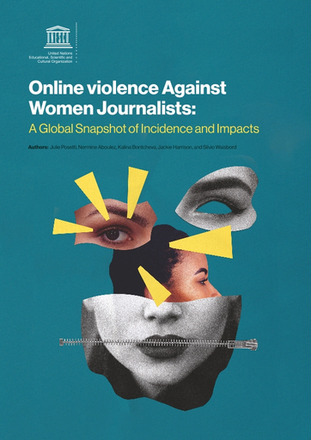
Related contents
Safety of Female Journalists Online- A #SOFJO Resource Guide#SOFJO campaign for the safety of female journalists online
This report presents a snapshot of the first substantial findings from a global survey about online violence1 against women journalists conducted by UNESCO and the International Center for Journalists (ICFJ) in late 2020. Over 900 validated participants from 125 countries completed the survey in Arabic, English, French, Portuguese and Spanish. The findings shared here reflect the input of the 714 respondents identifying as women.
Online violence has become a new frontline in journalism safety - a particularly dangerous trend for women journalists.
The psychological, physical, and digital safety and security impacts associated with this escalating freedom of expression crisis are overlapping, converging and frequently inseparable.
The phenomenon can be defined as a combination of: often brutal, prolific online harassment and abuse, including targeted attacks that frequently involve threats of physical and/or sexual violence; digital privacy and security breaches that can expose identifying information and exacerbate offline safety threats facing women journalists and their sources; and coordinated disinformation campaigns leveraging misogyny and other forms of hate speech.
Top findings include the fact that 73% of women respondents said they had experienced online violence, with threats of physical (25%) and sexual violence (18%), and that the mental health impacts of online violence were the most frequently identified (26%) consequence. Moreover, 41% of the respondents to this survey said they had been targeted in online attacks that appeared to be linked to orchestrated disinformation campaigns. Political actors are the second most frequently noted sources (37%) of attacks and abuse after, anonymous or unknown attackers (57%), according to the women respondents.
Tags: Harassment Media and gender Online news Online mediaThe content of this article can be used according to the terms of Creative Commons: Attribution-NonCommercial 4.0 International (CC BY-NC 4.0) . To do so use the the wording "this article was originally published on the Resource Centre on Media Freedom in Europe" including a direct active link to the original article page.

